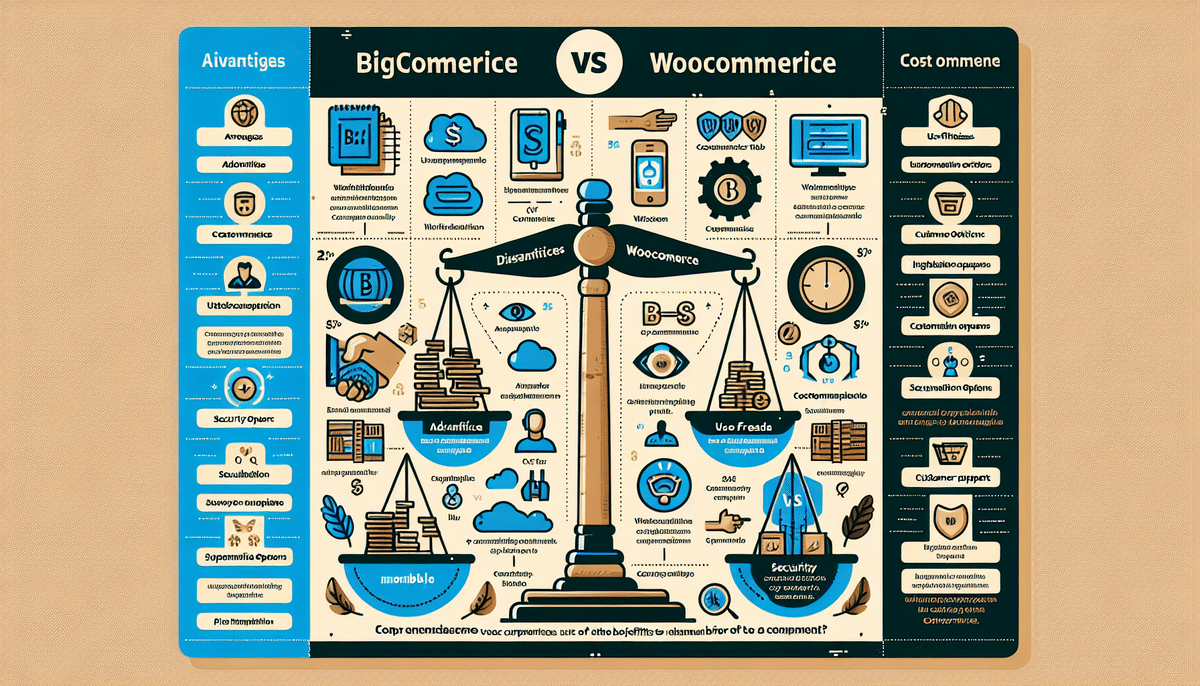PrestaShop vs WooCommerce: Comprehensive E-Commerce Platform Comparison
Choosing the right e-commerce platform is crucial for the success of your online store. Two leading options in the market are PrestaShop and WooCommerce, a popular WordPress plugin. This detailed comparison explores their features, pricing, ease of use, and more to help you decide which platform best suits your business needs.
Overview of PrestaShop
Launched in 2007, PrestaShop is a free and open-source e-commerce platform renowned for its flexibility and scalability. It offers a robust set of tools that enable merchants to create and manage online stores efficiently. With over 300,000 active stores worldwide, PrestaShop has a strong community of developers and users contributing to its extensive library of themes and modules.
Key Features of PrestaShop:
- Comprehensive inventory management
- Multiple payment gateway integrations
- Advanced shipping options
- Customizable templates and themes
- SEO-friendly URLs and meta tags
According to a G2 Crowd review, PrestaShop boasts a user-friendly interface, making it accessible even for those without technical expertise. Its scalability ensures that it can support businesses ranging from small startups to large enterprises.
Overview of WooCommerce
WooCommerce, introduced in 2011, is a powerful e-commerce plugin for WordPress, the world's most popular content management system. It transforms a WordPress website into a fully functional online store, offering a high degree of customization through a vast ecosystem of plugins and themes. As of 2023, WooCommerce powers over 28% of all online stores, highlighting its widespread adoption.
Key Features of WooCommerce:
- Flexible product variations (physical, digital, services)
- Extensive payment and shipping options
- Seamless integration with WordPress plugins
- Customizable storefront with numerous themes
- Built-in SEO tools and compatibility with plugins like Yoast SEO
With its ease of use and integration capabilities, WooCommerce is ideal for businesses already leveraging the WordPress platform. Its extensive documentation and large user community provide ample support for both beginners and advanced users.
Key Comparisons Between PrestaShop and WooCommerce
Pricing
Both PrestaShop and WooCommerce offer free base platforms, but their pricing structures diverge based on additional features and requirements.
- PrestaShop: Free to download and use, but costs may arise from domain registration, hosting, SSL certificates, and premium modules or themes. PrestaShop also offers a cloud-hosted option with additional features and dedicated support.
- WooCommerce: Free as a plugin, but requires a WordPress-compatible hosting plan. Additional expenses include premium themes, extensions, and necessary plugins for enhanced functionality. According to WooCommerce's official pricing page, costs can vary based on the specific needs of your store.
Ease of Use
Usability is a critical factor when selecting an e-commerce platform.
- PrestaShop: While it offers a comprehensive out-of-the-box solution, it has a steeper learning curve, particularly for those without technical backgrounds. However, its intuitive admin panel facilitates efficient store management once familiar.
- WooCommerce: Built on WordPress, it benefits from the platform's user-friendly interface. Those already acquainted with WordPress will find WooCommerce straightforward to set up and manage. Nonetheless, achieving advanced functionality may require additional plugins.
Features and Functionality
Both platforms are feature-rich, but their approaches differ.
- PrestaShop: Offers a comprehensive suite of built-in features, including advanced inventory management, multiple payment gateways, and extensive shipping options. Its modular architecture allows for extensive customization through add-ons.
- WooCommerce: Highly customizable through a vast array of plugins and extensions. While it provides essential e-commerce features out of the box, additional functionalities can be integrated as needed, offering greater flexibility.
Theme and Design Options
Design flexibility impacts the aesthetic and usability of your online store.
- PrestaShop: Provides a wide selection of free and premium themes designed specifically for the platform. These themes are highly customizable, allowing merchants to tailor their store's appearance to their brand.
- WooCommerce: Leveraging WordPress's extensive theme ecosystem, WooCommerce offers countless design options. Compatibility with WordPress themes ensures greater flexibility, enabling unique and responsive designs.
Security
Ensuring the security of your online store is paramount.
- PrestaShop: Includes built-in security features such as SSL support, data encryption, and protection against brute force attacks. Regular updates and a proactive community help maintain its security standards.
- WooCommerce: Relies on WordPress's security measures and offers compatibility with security plugins like Jetpack and Sucuri. Store owners must actively manage security updates and implement best practices to safeguard their sites.
Integrations
Integration capabilities expand the functionality and reach of your online store.
- PrestaShop: Supports numerous integrations, particularly with payment gateways like PayPal, Stripe, and Authorize.net. However, its selection is more limited compared to WooCommerce.
- WooCommerce: Excels in integration with the broader WordPress ecosystem, offering seamless connections with a multitude of plugins and third-party services, including major shipping carriers like FedEx and UPS.
Customer Support
Reliable support ensures smooth operation and quick resolution of issues.
- PrestaShop: Offers a dedicated support team for cloud-hosted users, along with comprehensive documentation and active community forums.
- WooCommerce: Provides extensive documentation and access to community support through forums. Premium support is available through various WooCommerce and WordPress service providers.
Pros and Cons of PrestaShop
Pros:
- Comprehensive e-commerce features out of the box
- Highly customizable with a strong community support
- Scalable for businesses of all sizes
Cons:
- Steeper learning curve for beginners
- Potential additional costs for premium modules and themes
- Limited selection of themes compared to WordPress
Pros and Cons of WooCommerce
Pros:
- Seamless integration with WordPress
- Extensive library of themes and plugins for customization
- Flexible and scalable with a large user base
Cons:
- Requires a WordPress-compatible hosting environment
- Additional costs for premium extensions and themes
- Potential performance issues with high traffic without optimization
Which Platform is Best for Your Business?
Small to Medium-Sized Businesses
For small to medium-sized businesses, WooCommerce is often the preferred choice due to its ease of use, flexibility, and the extensive range of available plugins and themes. Its integration with WordPress makes it an excellent option for businesses already utilizing the platform for their website.
Large Enterprises
Large enterprises may find PrestaShop more suitable due to its robust out-of-the-box features and scalability. PrestaShop's ability to handle high traffic volumes and complex product catalogs makes it a strong contender for larger operations.
Final Thoughts
Both PrestaShop and WooCommerce are powerful e-commerce platforms, each with its unique strengths. Your choice should be guided by your specific business requirements, technical expertise, and long-term growth plans. By carefully evaluating the features, pricing, and support options of each platform, you can select the solution that best aligns with your online store's objectives.




















